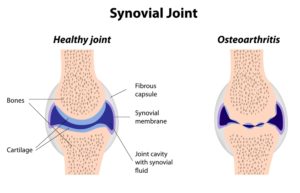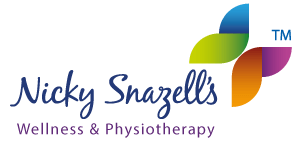Nicky Snazell offers her views on the Fitness & Exercise Pillar of the Optimum Health Parthenon in this article originally published in Staffordshire Life.
I believe fitness and wellness go hand-in-hand. When our bodies are fit anchors a sound mind. The pleasure from moving effortlessly envelopes the mind in bliss. This leaves our mind free to concentrate on the pleasures of life. Fitness helps us to avoid chronic pain and promotes well being.
So how can you achieve a fit body with a busy lifestyle?
You need to understand how much movement your body craves and when to rest if fatigue hits.
5 Top Tips for Everyday Fitness
- If you drive a car for over half an hour, park away from your destination and walk briskly, swinging your arms. This will ease the pressure on your spinal discs, loosen stiffened joints and improve blood flow.
- Swap your chair for a fit ball if you work at a desk. The small movements keep your mind focused and your spine healthy.
- At least ten times a day, take three deep breaths. This improves blood flow and sends signals to the brain to reduce stress chemistry.
- You boost your core postural muscles by adding a pilates move of gently pulling in the stomach button to the spine or slowing outbreathes.
- Follow a weekly plan of activity, like mine, listed below. If you wish to achieve a steady progression of fitness or get fit for a holiday or sports activity with the guidance of a fitness instructor, ask … at the clinic.
Example of My Summer 7-Day Programme – suitable for those working full-time
| Sat/Sun | Power walk or cycle outside for at least half an hour to two hours if not exercising at a gym. |
| Monday/Wed/Fri | Resistive exercises in gym with weights for 45 mins. Fast swim for 30 mins. |
| Tues/Thur | Fit ball, stretches and core work-out for 30 mins at home. |
For more tips
Arthritis (also referred to as inflammatory joint pain) CAN be prevented with a few simple changes to your lifestyle. Information on what food you should eat and exercises you should do to help prevent getting the worst arthritis symptoms and if you do suffer from arthritis, what treatments are available.
We march into joint problems with innocent ignorance. A poor diet full of processed sugar, excess fat, caffeine and alcohol, leads to obesity, compounded by poor posture and footwear. On these dark winter days, we rarely get the correct amount of exercise to protect our joints, putting our bodies through repeated stresses and strains with weak muscles. On top of this, it is difficult to keep a positive mindset with such negative world news.
No wonder arthritis creeps in.
My patients often ask if they have arthritis and what type. They often think that fibromyalgia is a form of arthritis.
Broadly speaking there are two kinds; osteo (OA) and rheumatoid (RA). An examination by your physiotherapist or GP with xrays and bloods should determine which it is.

Osteoarthritic Joint
OA, the most common type, is wear and tear in the smooth cartilage protecting the bones in joints, which eventually leads to bone erosion, bone spurs and unsightly bony end thickening. The joint juice, the synovial fluid, swells and becomes inflamed and sticky. The attacked bone haemorrages precious calcium. By 50 years old 8 out of 10 of us have OA and by 60, 9 out of 10. Left untreated, OA can have a massive negative impact on quality of life and eventually need surgery. When bone is very fragile, it becomes osteoporotic and breaks easily. By the age of 70, 1 in 3 ladies suffer this.
Clearly, for everyone, it is well worth investing time to prevent the worst. I have mild OA in my right knee following surgery and if I follow the plan enclosed, I keep the symptoms at bay.
RA is totally different to OA, whereby the malfunctioning of the immune system is self-destructive to joints and muscles. It is linked to genetic makeup and is believed to be triggered by a viral attack.
I am frequently asked about Fibromyalgia, but this is not arthritic or inflammatory. The symptoms of fatigue, sleepless nights and muscle pain are believed to be a malfunction of the mitochondria energy processing system in the cell.
Action Plan
Exercise regularly every 48 hours, including gentle exercises like Tai Chi or Yoga when you are feeling sore and stressed up, and try to exercise outside to get your daily sunshine, vital for vitamin D.
Consult a nutritionist to check for food allergies and consider a liver function test. Many natural products support the liver, including milk thistle, artichoke and dandelion.
Increase fruit and vegetable intake, especially raw. Best for arthritis are; carrots, green peppers, watercress, tomatoes, beetroot, berries, grapes, cabbage, broccoli, Brussel sprouts and kale.
Eat less red meat, dairy, sugar-laden and deep fried food, drink less alcohol and caffeinated drinks.
Increase water, ionised if possible.
Consider supplementing, and check with a nutritionist. I take high-quality antioxidants, minerals and Omega 3 & 6 every day. Calcium, magnesium and phosphorus are very important for arthritis.
For fibromyalgia, 5 HTP can help sleep, try malic acid with magnesium for pain and to boost ATP energy cycle, manganese and coenzyme Q10.
Check your blood sugar level. Vitamins C,E, manganese and chromium can help with this.
Menopause can increase the problems with arthritis and fragile bones. Mineral uptake can be poorer, vitamin D low in winter, hormone levels of oestrogen and progesterone and parathyroid can be out of kilter. There are great self help books out there, and your GP can advise you on your hormones and bone density.
If pain worsens on walking, consider a biomechanical check for your footwear.
Suitable therapies I like:
- For RA (rheumatoid arthritis): laser, acupuncture, physiotherapy, massage and reiki.
- For Fibromyalgia: the above plus GunnIMS dry needling.
- For Osteoarthritis: in addition to all the above, shockwave and massage are excellent.
- For Osteoporosis: Shockwave
